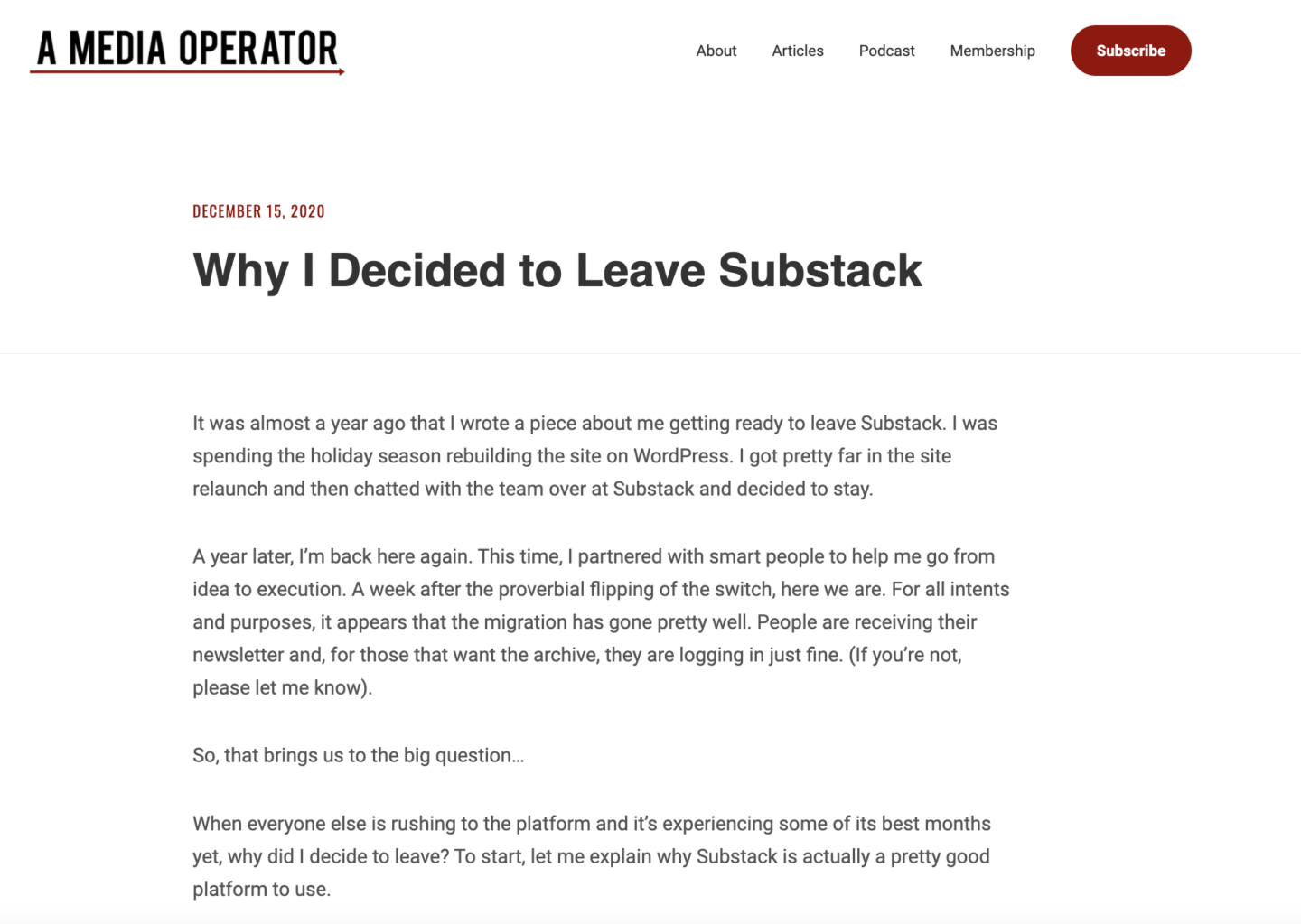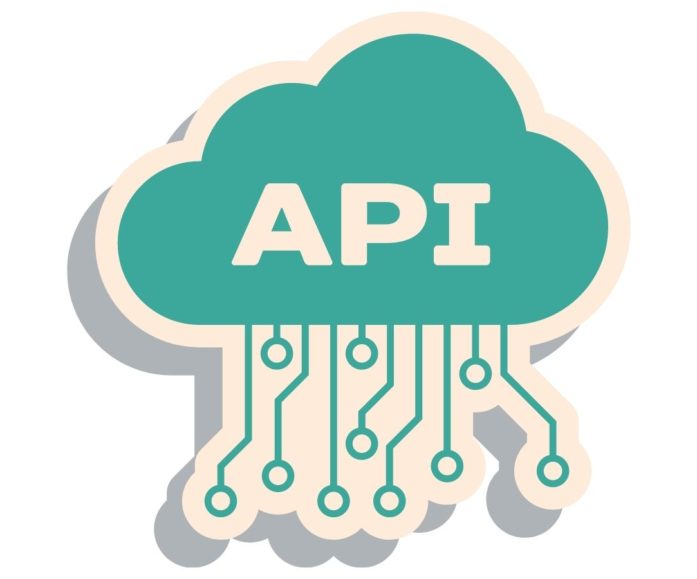
Why WordPress works for publishers of every size
Digital Media is not a monolith. It ranges from the individual creator to the billion dollar multinational corporation. Yet WordPress can be a great publishing platform for both ends of the spectrum and everything in between, as you you’ll see from the examples in this article.
Why is WordPress a good CMS for digital publishers?
Not every digital publisher uses WordPress in the same way or to achieve the same benefits. Unlike SaaS website builders, WordPress is definitely not a one-size-fits-all publishing platform. It’s a complete publishing ecosystem; a solid collection of open-source building blocks and tools that can be engineered into a totally bespoke website.
The Code Company works exclusively with WordPress but as you’ll see in these publisher case studies, all our clients have different business models and face unique challenges. The beauty of WordPress is that it can be leveraged to suit any of these scenarios.
So here’s a sample of how three very different types of digital publishers use WordPress, and the transformation it brings to their businesses.
How major news publishers use WordPress:
Large publishers including the News Corp, Reuters, Nine (Australia), and Forbes are all built on WordPress. Here are the top 3 benefits they experience from the software:
1. Acceleration of newsroom workflows
When it comes to breaking news; speed and agility are everything. That’s why editorial teams are on a constant quest to reduce the time between an event occurring and the story going live.
For news publishers, a move to WordPress is liberating because hours of repetitive manual labour can be erased almost immediately. For example, image manipulation is a vital but horribly time consuming task in newsrooms. Images traditionally need to be edited and resized for the many platforms the story appears in (AMP, social, mobile, desktop etc.) Yet with WordPress (and some nifty engineering) editorial teams can enjoy intelligent image cropping and auto-thumbnailing functionality.
Images aside, the overall editorial experience of WordPress is best-in-class. Content producers can create, edit, approve and preview their work in a streamlined process that takes minutes rather than hours. Nine’s WordPress-based publishing platform Ink reduced the production time of newsletters by 90 minutes. And when Newscorp Australia moved their titles to WordPress in 2016, they reported a 4,000% improvement in speed of creating page layouts.
In this video from WordCamp Europe, Newscorp Engineering Manager Dion Beetson describes how they scaled WordPress to support over 3 million posts across 22 sites, with over 16 million users a day.
2. Enterprise Integrations
News publishing sites don’t operate in isolation, they’re reliant on constant communication with other platforms. These might include internal systems like CRMs and marketing software as well as front-facing applications such as weather updates and stock data.
WordPress has a huge ecosystem of plugins, integrations, and custom software, which can be simply and seamlessly connected to the CMS through API’s like REST and GraphQL. If you’re a news publisher with multiple sites, you can also leverage WordPress APIs to create decoupled applications that surface content across every channel.
3. Scaling for high traffic
Nothing is more challenging to anticipate than major traffic fluctuations. When a piece of content goes viral, news publishers must be prepared to scale instantaneously to handle the influx of site visitors.
This type of technical optimisation is a core speciality of The Code Company. Scaling actions might include the following: code review, real user monitoring (RUM), load testing, caching, and CDN implementation. WordPress is designed to handle tens of thousands of logged-in users at a time so from a scaling perspective, you’re already starting from a strong foundation.
Hosting is also incredibly important to scalability, and the best managed hosting providers for high-traffic sites are all built for WordPress.
How specialist publishers use WordPress:
Next up are the smaller, specialty publishers, which include TechCrunch, Mumbrella (Australia), LION Publishers, and Her Campus Media. Here’s why WordPress is a great solution for niche publishers:
1. Plugin marketplace
Niche publishers rarely have the resources to build tech solutions from scratch. That’s why the WordPress plugin marketplace is so valuable. With a choice over 57,000 plugins and 8,000 themes there’s a solution for almost every business requirement.
Specialist publishing Initiatives like Newspack, funded heavily by Google, provide high-quality frameworks for publishers to build first class digital experiences with a fraction of the effort of building from scratch. Newspack usually requires some additional custom work but it remains a good option for publishers with limited budgets and basic publishing needs.
READ MORE: Case Study: Drupal to Newspack Migration for Indie Publisher rabble.ca
2. No vendor lock-in
WordPress is the leading open source CMS, with a huge pool of talent on offer for every development need. Unlike proprietary systems, WordPress doesn’t tie you into a specific agency or developer, so you can easily employ someone new if you’re unhappy or want to change direction.
WordPress is also free from the upfront licensing fees that are often a prerequisite with vendor-specific platforms, so the total cost of ownership is usually lower.
3. Multisite capabilities
One of the best ways for specialist publishers to generate new streams is to launch a new vertical. WordPress comes with a feature called Multisite that allows site owners to manage multiple websites from a single WordPress installation.
Specialist publisher ArtsHub was able to launch a new vertical in 30 days after moving to a standardised WordPress Multisite setup.
“I’m most excited about seeing what the new (WordPress) website will allow us to do from a product and revenue perspective. We can now innovate and experiment with new commercial products” ”
The independent creator
Finally, let’s look at the independent creators. It feels like a new platform launches every day to cater to this group, but the reality is, WordPress can give creators everything they need to run a thriving paid newsletter community — without the limitations and added costs of specialist platforms.
Here’s why WordPress is a good solution for creators:
1. Greater control of revenue
Creator platforms like Substack and Medium are a great way to get started as an independent creator as there’s no financial outlay to launch. However, once you start offering paid subscriptions, the costs soon add up. For example, Substack charges 10% on each transaction, plus a further 2.9% payment processing fee (for Stripe) plus a further 30 cents per transaction. As business Creator Lenny Rachitsky who has over 90,000 subscribers, points out….
Independent writers often don’t realise that it’s possible to run a successful paid newsletter in WordPress for a fraction of the cost. The Code Company has successfully migrated numerous writers to a WordPress-based stack that integrates with off-the-shelf subscription, CRM and email software, allowing them to keep more of their revenue.
2. Audience segmentation and content personalisation
When it comes to building a successful online community, audience ownership is everything. You need the ability to segment your readers, to create personalised content and build unique user journeys for different groups. All of these important customisations are made easy in WordPress.
In 2020, Jacob Donnelly, the creator of popular publishing newsletter A Media Operator replatformed from Substack to WordPress. The move enabled him to create a unique user experience for visitors depending on their subscriber status. New visitors see a custom layout which educates them about A Media Operator and prompts them to sign up for the free newsletter. If an existing newsletter subscriber visits the site, they receive personalised content and are encouraged to upgrade to access premium articles.
3. Native newsletter creation in WordPress
Imagine if sending a newsletter was as simple as posting a blog. That’s what the creators of Newsletter Glue did when creating a clever little plugin that enables you to draft and publish your newsletter directly from WordPress. It’s stunningly straightforward and contains all the features most digital publishers would ever need, such as callout cards, author bylines and social embeds.
A final word about WordPress as a digital publishing platform
As you can see, WordPress is far from a one trick pony. No matter if you’re a large news media organisation, a specialist niche publisher or an independent creator, WordPress can be engineered to support your business needs.
WordPress is also far less risky than building a proprietary CMS, and far more user-friendly than complex enterprise platforms like Drupal.
Read More: Drupal vs. WordPress. Which is best for digital publishers?
When you build your publishing website with WordPress you’re getting the best of both worlds. The flexibility to create a truly customised digital solution, plus the safety of knowing you’re using the most robust and trusted CMS on the market.
Need an Enterprise WordPress development team to build your platform?


